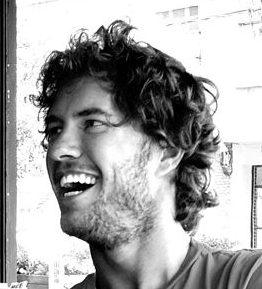Expert Feature: How Your Business Could Change Someone’s Life
Blake Mycoskie first visited the country of Argentina when he was competing in the second season of The Amazing Race with his sister Paige in 2002.
He later returned there on vacation in January 2006.
It was on that vacation that his life would be changed forever.
On that trip, he was doing some volunteer work in the outskirts of Buenos Aires, when he noticed that many of the children were running through the streets barefooted.
That was unusual, but what he discovered about that shocked him.
He learned that a lack of shoes was a big problem in Argentina and other developing countries.
It was actually the cause of many life-threatening diseases.
He was very bothered by that, so he came up with a solution that was surprisingly simple, yet revolutionary.
His idea was to create a for-profit business that was sustainable and not reliant on donations, but would still help the kids who needed shoes.
But he still had to decide what kind of shoes his business would offer.
He had noticed that the local polo players were wearing a form of shoes called alpargatas, which were a simple canvas slip-on shoe that he himself began to wear.
He found out that the shoes have also been worn by Argentine farmers for hundreds of years.
Those were the inspiration for the shoes he would eventually sell for a company he would call TOMS shoes.
The amazing concept he came up with was that for every pair sold of Toms shoes that were purchased, he would provide a new pair of shoes – free of charge – to the shoeless youth of Argentina and other developing nations.
And this idea has really taken off!
In Argentina, TOMS Shoes has provided over 10 million pairs of shoes to children since 2006, and now they have TOMS Eyewear, which has restored sight to over 175,000 since launching in 2011.
Just this year, TOMS Roasting Company was founded with the mission to provide clean water to developing communities with the purchase of premium coffee.
Two Main Business Models throughout History
His business model is really ingenious because up until that point, there have been two main types of organizations:
- For-Profit Businesses: The primary goal of this type of organization is making money (a profit) through the sale of products or services. (They can use some of that profit to help others, but the primary reason for the business is to make profit.)
- Non-Profit Organizations: The main goal of this type of organization is to serve or help a group of people. It is concerned with money just as a means of keeping the organization going.
Two Main Challenges with These Models
The problem with these two models has been how they limit the business owner or organization founder:
- For-Profit Businesses: Beyond the benefit or result of the actual product or service they provide, they haven’t been able to focus the business itself on helping others.
- Non-Profit Organizations: They have been able to focus on helping others, but usually struggle to bring in enough money to continue operating and serving people.
These may be simplistic ways of describing these two types of organizations and their challenges, but what I want you to see is how Blake Mycoskie morphed these two types of entities and created a new type of entity, which gets profit from customers and simultaneously uses a portion of it to help others.
Author Daniel H. Pink described the company’s business model as “expressly built for purpose maximization”, because TOMS is not just selling shoes.
They are selling an ideal. They’re creating customers and benefactors at the same time.
Three Simple Ways Your Business Could Change Someone’s Life
It’s probably too late for most of you to change your business model, but it’s not too late to use your business to change someone’s life. Here are three ideas:
1. You could commit a portion of your profits to an organization that helps others. (10% is a good start)
2. You could challenge your employees to volunteer for organizations and offer some incentives for those who excel at this. (Bonuses, time-off, etc.)
3. You could promote a non-profit organization at your location, through your ads, and through your customer communications. (Non-profits need all the help they can get on getting exposure.)
Here Are Two Bay Area Companies Making a Difference
If you’re intrigued by Blake Mycoskie’s model and you’d like some other examples of other companies that are making a difference like TOMS shoes, then check out these local companies:
1. Hiip:
Nicole Flowers is the founder of Hiip. They sells new, eye-catching, and improved hip bags for women. With the purchase of each bag and kit of basic necessities is hand-delivered to someone in need who lives on the street.
2. Ellie Fun Day:
Elton & Sarah Lin are the founders of Ellie Fun Day. They design baby blankets that change the lives of marginalized women in India.
You can use these business as inspiration and I would encourage you to help spread the word about them and support their efforts. (*I know the founders of these companies. They are great people who want to make a difference.)
Don’t just settle for a business that makes a dollar.
Strive to have one that makes a difference!
Photo: Twitter
Related article
- Lessons From “The Voice”: Does Your Business Have Any Personality? (baybusinesshelp.com)


